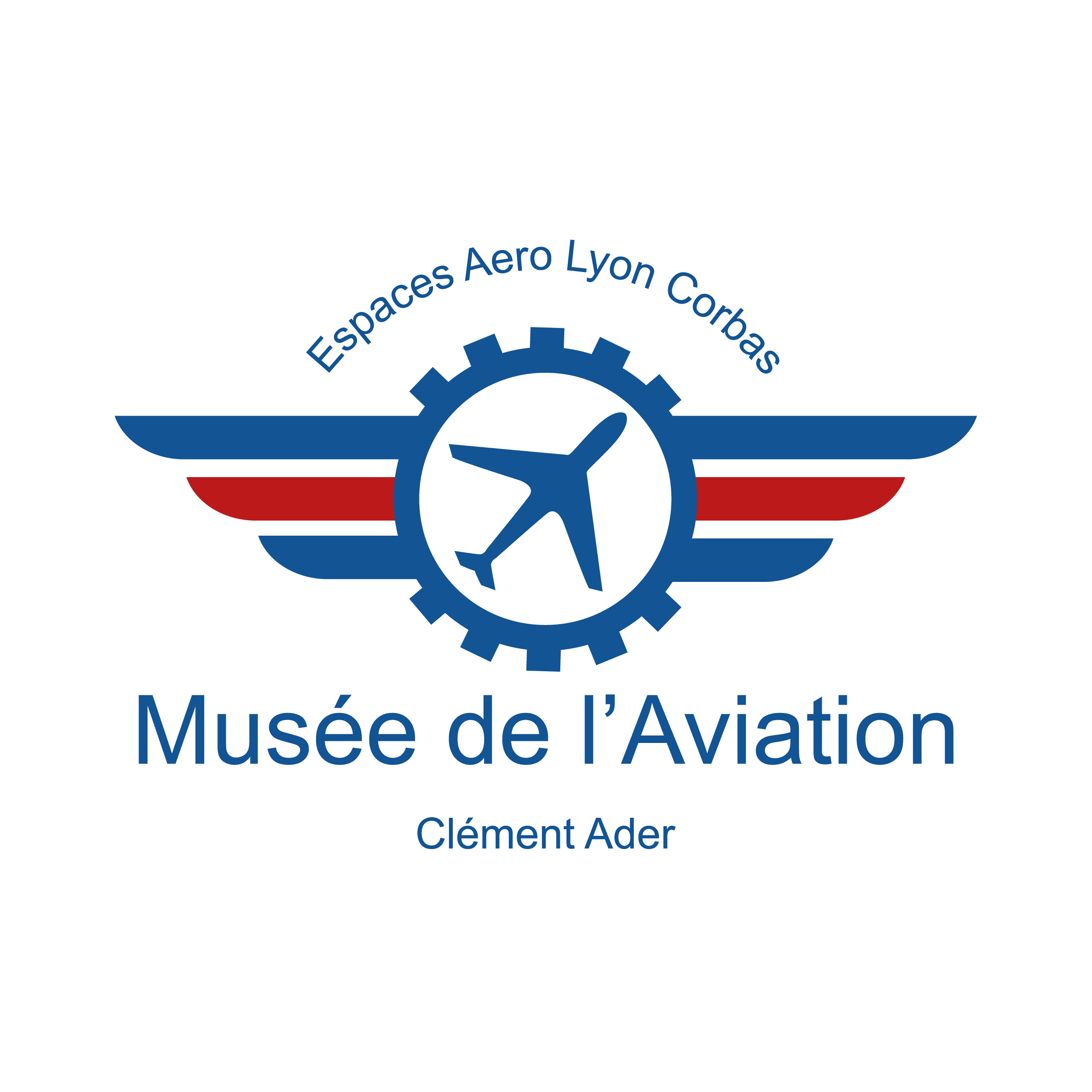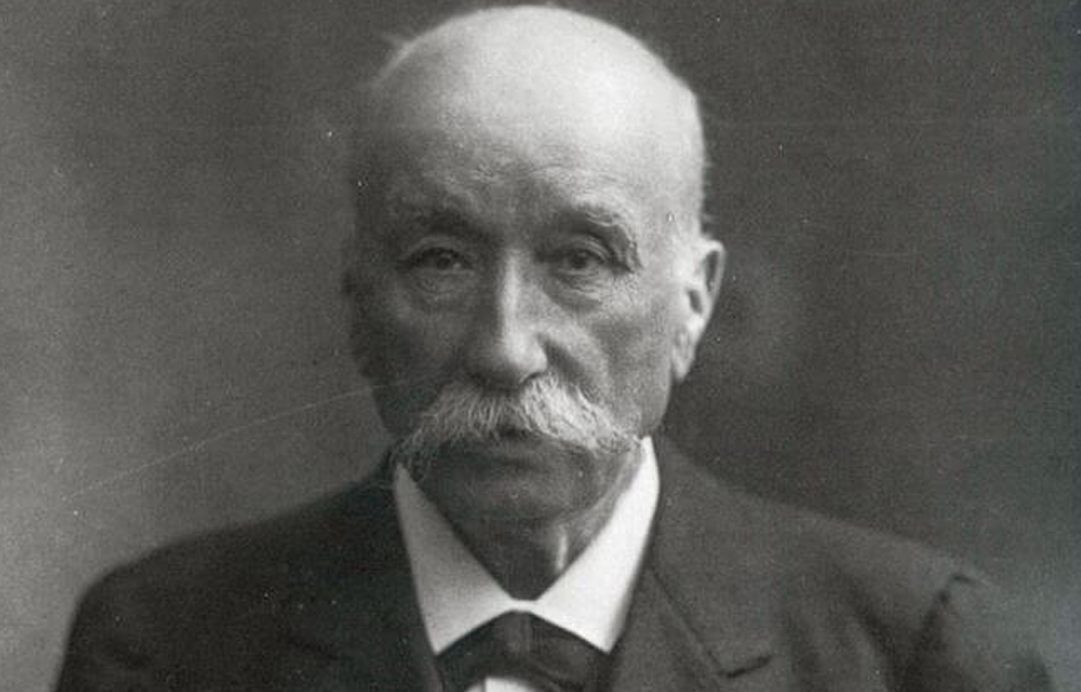This trained engineer, prolific and efficient inventor created with his own hands a motorized airplane which proved to be the first “heavier than air” to have left the ground, on October 9, 1890. In addition to his qualities of pioneer, Clément ADER also proved to be a visionary theoretician as well as the inventor of the word « avion ».
His youth…
On April 2, 1841, Clément Ader, son of a carpenter, was born in Muret, near Toulouse. An excellent student at the St Joseph boarding school in Toulouse, particularly in mathematics and drawing, he devoted himself from 1855 to various aerial activities: testing kites, and even shackled ladybugs! He entered the Assiot Institution in Toulouse in 1856, where he obtained his bachelor in science the following year at the age of 16. He was part of the first promotion of the Industrial School graduating engineer in 1860.
The inventor
His natural curiosity combined with his solid training as an engineer will make him a prolific inventor: employed by the Compagnie des Chemins de Fer du Midi, owned by the financier Emile PEREIRE, he filed a first patent for a machine to raise the tracks of roads railway then a second for a removable railway system, with key model. After his departure from the Company in 1866, he exercised his talents as an inventor in various fields: railway system intended for Algeria, patents for “Véloce” rubber wheels intended for velocipedes, caterpillar wagons, fixing device for tiles flat roofs, submarine cables, hydrofoil and even the first V-engine. Established in Paris, he filed a patent on the telephone and invented stereophony (“théatrophone”) in order to listen to the shows given at the Paris Opera from his home .
Airplane development
Sensitized to the things of the air by his youthful experiences with kites, he proposed, without success, in 1870, to develop a military version intended for observation. Continuing his efforts, in 1873 he built a 20 kg glider in hollow wood and goose feathers. Attached to the ground by 4 cables via dynamometers, it performs, at a height of 1.5 m, the first drag measurements in the world, in the « autan » wind. He deduces a glide ratio of 10, and the need to have an engine weighing no more than 8 kg/hp to fly. He therefore began the study of the 12 hp steam engine necessary for the flight, a four-cylinder of 23 kg, or 6.4 kg/hp for the whole (boiler, condenser, etc.). Manufactured in 1884, the engine was successfully tested in 1885. He carried out numerous tests for the fuel: charcoal, oil, petroleum, methyl alcohol, before selecting the latter. An attentive observer of animal flight, he was inspired by the bat to build the « Eole », a winged device in bamboo and linen, remarkable from several points of view: not only did he describe his new solutions in relation to the glider, with warping of the wing and its folding, coupling rudder/rear wheel, automatic variable pitch propeller, but also the nomenclature with “aviation” and “aviator”. On April 19, 1890, Clément Ader filed a patent relating to “a winged device for aerial navigation called Avion“. His first demonstration took place on the following October 9, on a 200-meter track that the banker Gustave Pereire had laid out for him in the park of his castle in Armainvilliers, in Seine-et-Marne. Ader started the engine of the plane and very quickly, the jolts of its wheels ceased, Éole rose 20 cm above the ground over a distance of 50 meters. The “heavier than air” takeoff was thus achieved for the first time in the world. Ader then received the support of the Ministry of War.
A second demonstration took place the following year at the Satory military camp, near Versailles. But the wind deports « Eole II » which is destroyed. New tests took place on October 12 and 14, 1897, at Satory with a new twin-engine aircraft. « Éole III » travelled a few hundred meters, picked up speed, the wheels left the ground sporadically. But the weather conditions were bad and « Éole III » left the track, as « Éole II » had done. The report was nevertheless established of the disappearance of the traces of wheels on the ground on 300 meters, proof of a very real takeoff of the plane. Unfortunately the reality of these thefts were long disputed to him on the one hand because the only witnesses were directly involved, therefore biased, and on the other hand because these thefts were covered by military secrecy, thus “classified”.
Theoretician and visionary:
In early 1909, he published the historic and prophetic “Military Aviation”, pleading for a strong aviation minister, industry and air force. More technically, it describes three types of military aircraft, fighters, torpedo planes and scouts (reconnaissance). He considers squadrons and formation flying and even describes the bombing sight. For the armament of aircraft, he studied “land and sea torpedoes”, the latter bevelled to bend their trajectory under water before striking ships perpendicular to their hull. He also invented the concept of the aircraft carrier: “An aircraft carrier becomes indispensable. These ships will be built on plans different from those currently in use. First, the bridge will be free of any obstacles; flat, as wide as possible, without harming the nautical lines of the hull, it will present the appearance of a landing area. The word landing is perhaps not the term to use, since we will be at sea, we will substitute that of ship-landing. “.
He masterfully concludes his work with these words: “He who will be master of the air will be master of the world”


